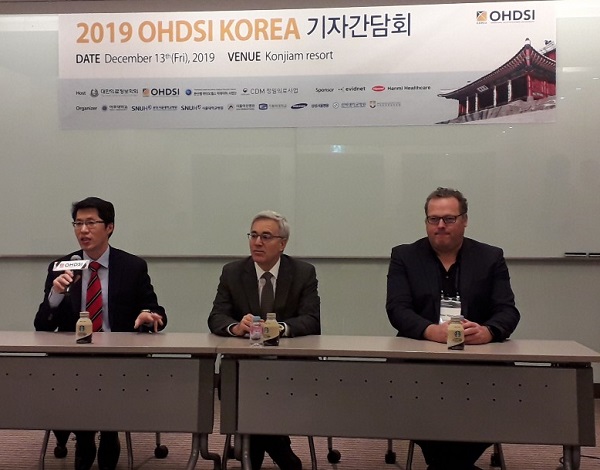An international group has opened a new way for healthcare researchers around the world to get anonymous patient records easily and use them in their studies.
Observational Health Data Sciences and Informatics (OHDSI, pronounced "Odyssey") is behind this move. OHDSI is a non-profit international research organization that analyzes and standardizes medical records around the world as a “common model” and uses the analysis results in research.
OHDSI has a “distributed research network” using OMOP (Observational Medical Outcomes Partnership) common data model, which is the most commonly used big data in the healthcare sector.
More than 200 research institutions around the world, including more than 30 university hospitals in Korea, participate in OHDSI, resulting in clinical data of more than 2 billion people converted into a standard data model. This will enable healthcare professionals to obtain reliable clinical data on a large scale faster than in the past.
At a news conference during the OHDSI Korea International Symposium at Konjiam Resort on Friday, OHDSI’s coordinating center head George Hripcsak, a professor at Columbia University, and Erasmus University Professor Peter R. Rijnbeek, and Park Rae-woong, a professor at the Department of Biomedical Informatics at Ajou University School of Medicine, introduced how OHDSI is used in the U.S. and Europe.
Experts noted that OHDSI has secured high reliability and resolved privacy concerns that have been pointed out as a problem to be solved when using big data.
Retrospective analytical studies using clinical data from various medical institutions have raised concerns that the electronic medical records may be biased due to different medical recording systems of each institution.
OHDSI, however, reduced concerns about bias by converting individual records into common data. Even if each medical institution creates its medical records, OHDSI automatically converts them to shared data, so researchers do not have to do separate work.

Indeed, Hripcsak used a common data model to study the effects of existing hypertension drugs. The study was highly credited and published in the international journal, Lancet.
OHDSI also solved the issue of patients’ information security, which was a major concern in the use of medical records. In OHDSI’s “research network," there is no exchange among patient data. If a researcher wants to participate in a particular study, the researcher assigns the patients’ data from his or her medical institution according to the design of the study to derive the results and shares this data only.
Park said although each hospital introduced electronic medical records, they had all different data structures. This made it impossible to research integrated data from various institutions. To resolve this problem, researchers need a standard data model, he said.
“In Korea, 63 hospitals participated and agreed to standardize data. As individual data does not go outside, there is less concern,” he added.
Hripcsak, the leader of OHDSI in Europe, said he used the OHDSI network to study which existing hypertension drugs were more effective on patients, and analyzed data of 5 million patients. “In this process, researchers could not see patients’ personal information,” he emphasized.
With obstacles to data collapsed, governments, industries show interest
The advantage of OHDSI is that millions of patient data can be used for research faster and more freely without fear of privacy leaks. However, in the integrated analysis of multinational and multi-institutional patient data, the question arises on how to analyze or interpret differences in the national insurance system.
As for this issue, Park said OHDSI standardized different languages, terminology, and codes, which led the number of data to reach about 7 million. ”Based on this, we unified the analysis method, too. Despite all this, if there is a difference in results, it might be a difference in the health system and the genetic system,” he said.
Because OHDSI allows the use of data of billions of patients, governments and pharmaceutical industries are showing great interest amid the rise of medical costs and new drug development expenses.
“Data-related organizations, governments, and pharmaceutical companies are funding OHDSI. As OHDSI is open source, there's plenty of room to open up the tool and do some research together,” Hripcsak said. “Even if they are funding, they have no authority to access data. They provide an open-source or a tool, like researchers,” he added.

